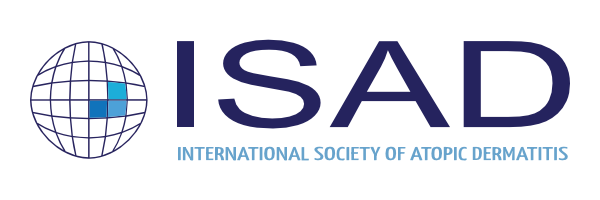The following two candidates received the third ISAD research awards:


Erere OTROFANOWEI, MBBS, FMCP
Senior Lecturer / Consultant Dermatologist
Department of Medicine, CMUL / LUTH
Lagos, Nigeria
December 2023
I am a medical graduate of the University of Benin in Nigeria and a fellow of the National Postgraduate Medical College of Nigeria. As a Senior Lecturer and clinical researcher at the College of Medicine, University of Lagos in Africa’s most populous country, Nigeria, I ams a very active academic teacher and scientist. I am also a consultant dermatologist and genitourinary physician with the Department of Medicine, Lagos University Teaching Hospital (LUTH). I have special interests in Atopic and Contact Dermatitis, Cutaneous oncology and Pigmentary disorders though practices general dermatology with the dearth of specialists in the country. I have authored and co-authored papers published in peer reviewed journals both locally and internationally and am a regularly invited speaker at professional and non-professional conferences and seminars. I am a fellow /member of many national and international associations and the current Treasurer of the Nigerian Association of Dermatologists (NAD). I am also a fellow of the American Board of Aesthetic Medicine and tutors in aesthetic and procedural dermatology. I run a very busy clinical practice as an external consultant to some multinational specialist hospitals in Nigeria and have a very active Teledermatology practice.
Thanks to the ISAD Society research fellowship grant, my research is geared towards comparing the biophysical properties of lesional and non-lesional skin of African patients with atopic dermatitis (AD) in Lagos and assess disease severity with a biomarker.
Atopic dermatitis results from a complex interplay of genetic predispositions, immune dysbiosis, epidermal barrier dysfunction and environmental factors. Alterations in the skin biophysical properties are responsible for the flares and remissions of this disease which has significant impact in the quality of life of its sufferers and their caregivers. Whilst skin of AD patients in the West has been extensively studied, their African counterparts are yet to be defined with respect to exact genes and biophysical parameters which may be instrumental to disease management. Measurement of these parameters on African skin via skin pH meters, corneometers or through novel electrical impedance spectroscopy will give important information on the epidermal barrier of African AD patients living in Africa- which factors the environmental influence of the disease.
Prof CEZMI has extensive experience into epidermal barrier dysfunction using the Nevisense® tool in atopic dermatitis. Thanks to the ISAD Society, I will be working with him at the Swiss Institute of Allergy and Asthma Research centre (SIAF) in Davos, Switzerland to investigate African AD skin comparing them with non-atopics in Africa.
I also plan on investigating the usefulness of chemokine C-C motif ligand 17/thymus and activation-regulated chemokine (CCL17/TARC), a chemoattractant of TH2 cells as a biomarker in AD. The combination of these two factors provides more information of AD severity than using serum TARC alone as it has been suggested that a panel of biomarkers is more suited to the heterogenous pathogenesis of AD rather than a single biomarker such as serum PSA for cancer of the prostate. An ideal biomarker should also be easy to obtain in a minimally invasive procedure (such as dried blood spots) to minimise patients’ discomfort and maximise their willingness to be sampled. The use of biomarkers in correlation with skin barrier parameters will hopefully enhance the efficacy of AD treatment by facilitating the individualization of therapy targeting the patients’ specific biological signature and by providing tools for predicting and monitoring of therapeutic response.
Javier ARELLANO, MD
Jefe Unidad de Dermatología – UNACESS
Hospital Clínico San Borja Arriarán
Profesor Asociado, Sede Centro – Departamento de Dermatología
Universidad de Chile
December 2023
I am a dermatologist, serve as the Chief of Dermatology at San Borja Arriarán Hospital, affiliated with the University of Chile, where I hold the position of Associate Professor. During my residency, I completed observer fellowships at Yale with Dr. Jean BOLOGNIA and at Harvard Boston’s Brigham and Women’s Hospital, shaping my international perspective in dermatology.
With a commitment to academic excellence, I earned two master’s degrees, one in epidemiology and another in systemic autoimmune diseases. My dedication to education is evident through my participation in training courses and the acquisition of diplomas related to health teaching. I am an integral part of the teaching committee at the University of Chile’s Dermatology Department, imparting knowledge to both undergraduate students and dermatology residents.
In clinical practice, I specialize in immune-mediated skin diseases, particularly as the coordinator of the Atopic Dermatitis Working Group of the Chilean Society of Dermatology. I am recognized as a local and regional authority in this field, contributing significantly to the understanding and management of these dermatological conditions. My impactful contributions span clinical leadership, academic excellence, and a focus on advancing dermatological care in Chile.
Association of Environmental Ecological Variables with Atopic Dermatitis Incidence in France
Theoretical Framework:
The project aims to explore the association between environmental ecological variables and the incidence of atopic dermatitis in France. Atopic dermatitis, a chronic inflammatory skin disease, exhibits varying prevalence across age groups but is generally affected by genetic predisposition and environmental factors. The project specifically targets latitude, smoking, and water hardness as key environmental variables influencing atopic dermatitis.
- Latitude and Vitamin D Synthesis: Higher latitudes, closer to the equator, with increased ultraviolet radiation, show an inverse association with atopic dermatitis prevalence. Latitude serves as an intermediate variable influencing vitamin D synthesis, a factor implicated in immune function.
- Smoking’s Impact on Immunity: Smoking’s effect on humoral and cellular immunity is explored, with evidence suggesting a potential association between childhood exposure to smoking (active, passive, or during pregnancy) and atopic dermatitis.
- Water Hardness and Dermatitis Development: Water hardness, a factor in the mineral concentration of water, has been linked to the development and exacerbation of atopic dermatitis. Studies have found a significant association between residing in areas with harder water and increased incidence of atopic dermatitis in children.
Ecological Studies in Epidemiology:
Ecological studies, assessing variables at a population level, are chosen to demonstrate the association between ecological variables and atopic dermatitis. Despite potential ecological fallacy concerns, these studies are instrumental for shaping health policies by evaluating aggregated exposures at a population level.Main Objective:
The primary objective is to evaluate the ecological association between population-based variables (latitude, water hardness, smoking prevalence) and the incidence of atopic dermatitis in France.Hypothesis:
The project posits that the incidence of atopic dermatitis is significantly associated with ecological variables such as latitude, water hardness, and smoking prevalence in France.Methodology:
The study adopts a cross-sectional ecological design, conducted at Centre Hospitalier Universitaire (CHU) Rennes, France, over three months from May to July 2024. The focus is on evaluating the relationship between ecological variables and atopic dermatitis incidence, contributing valuable insights for public health policy considerations.

